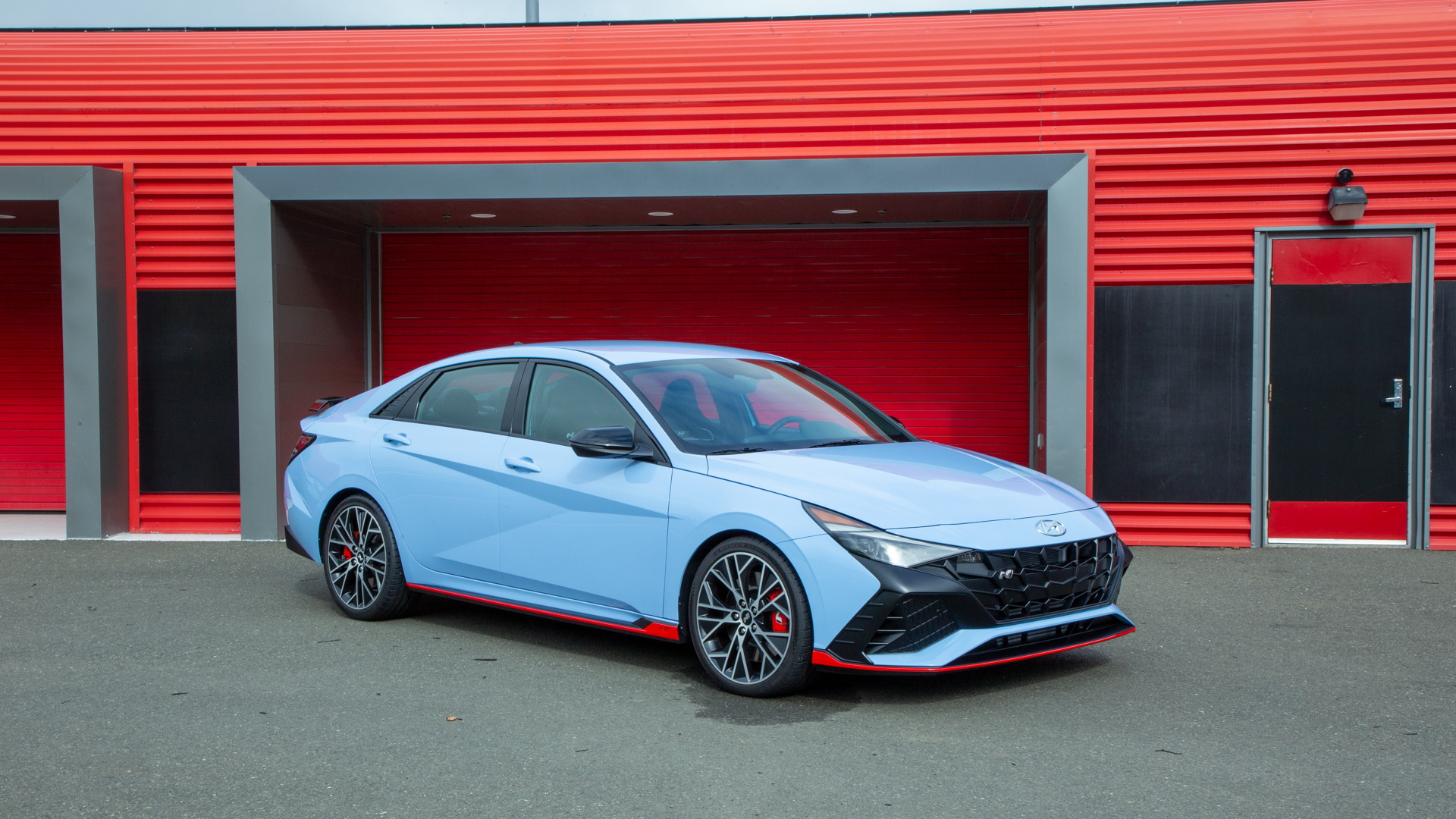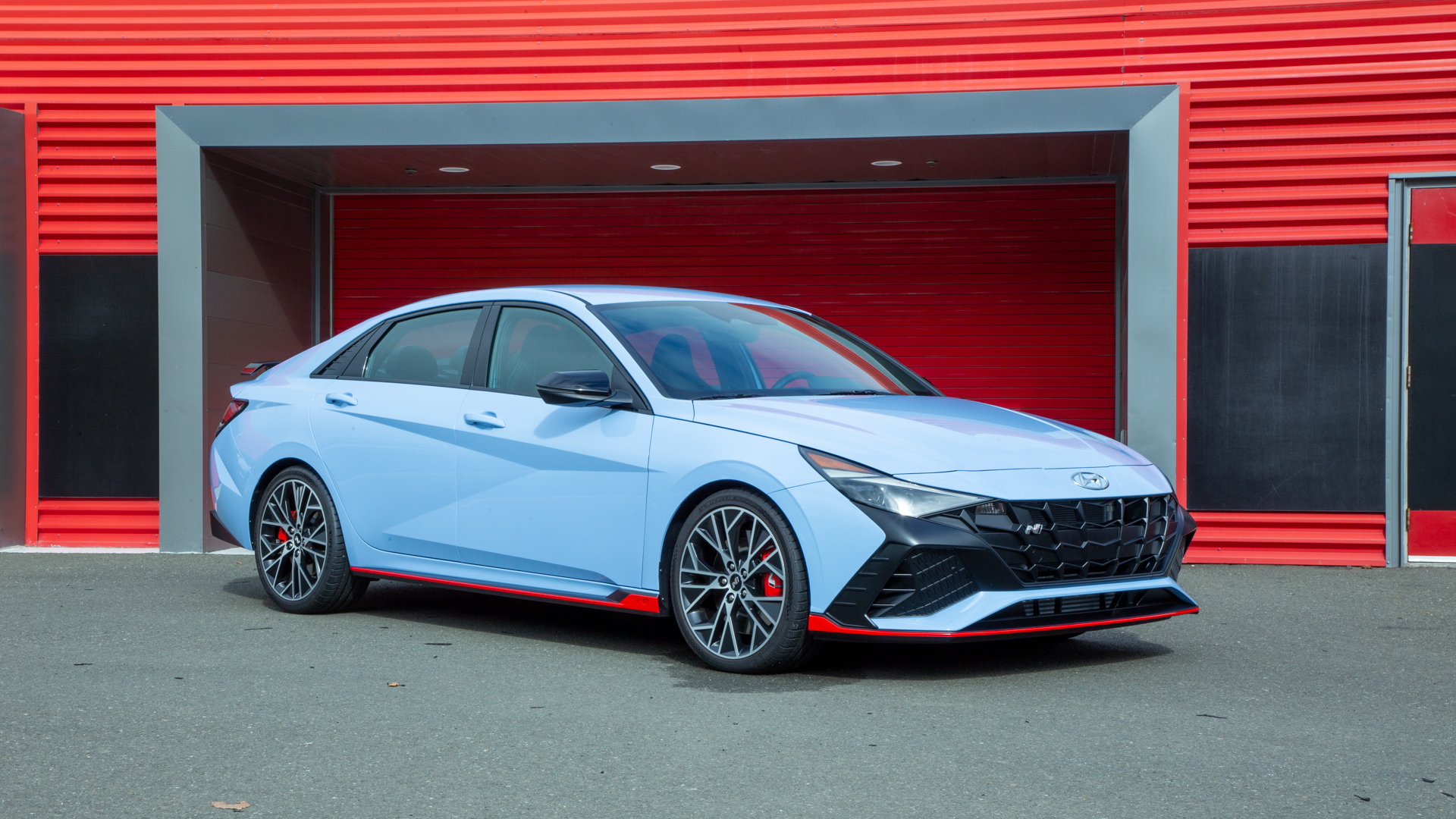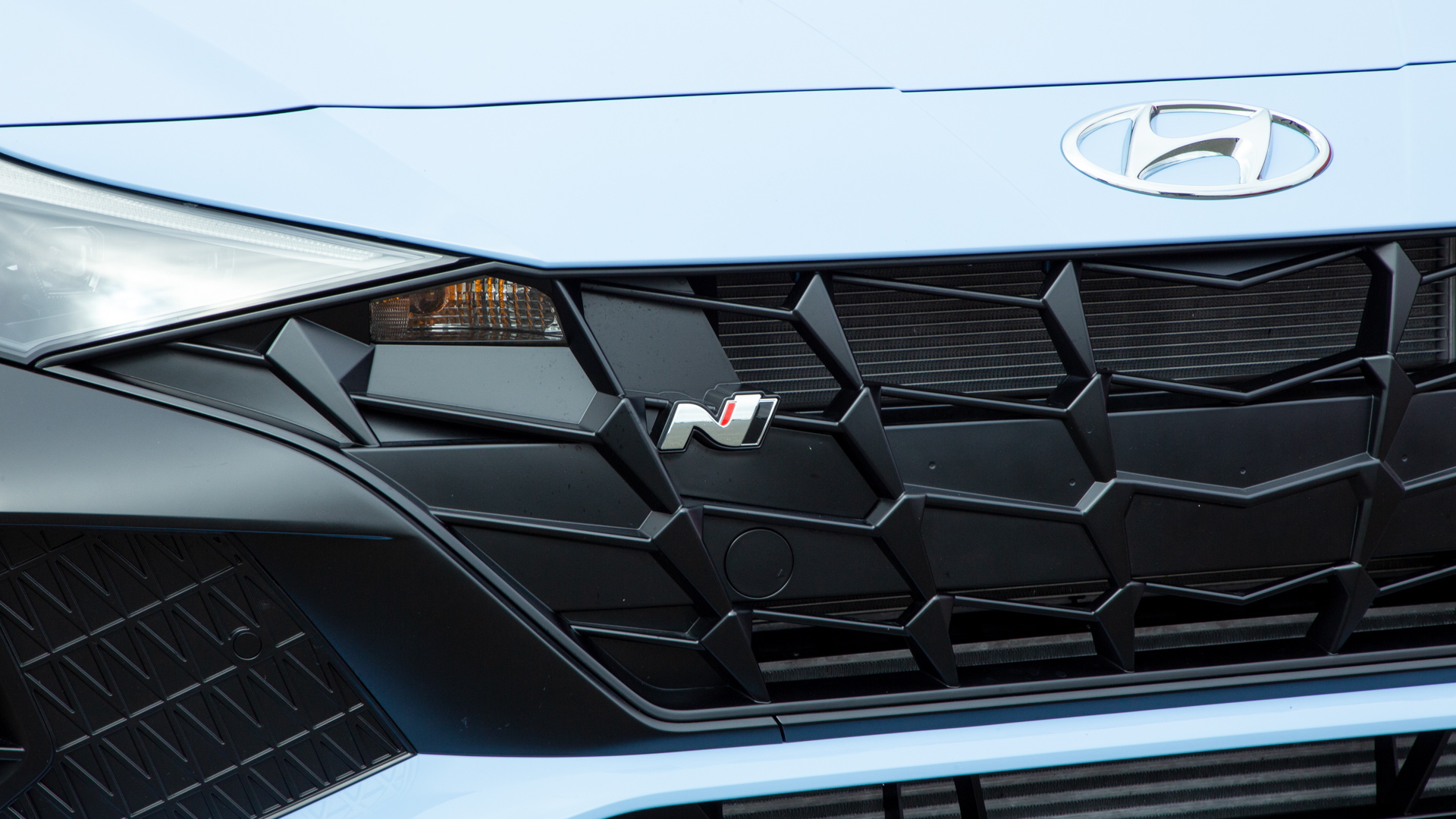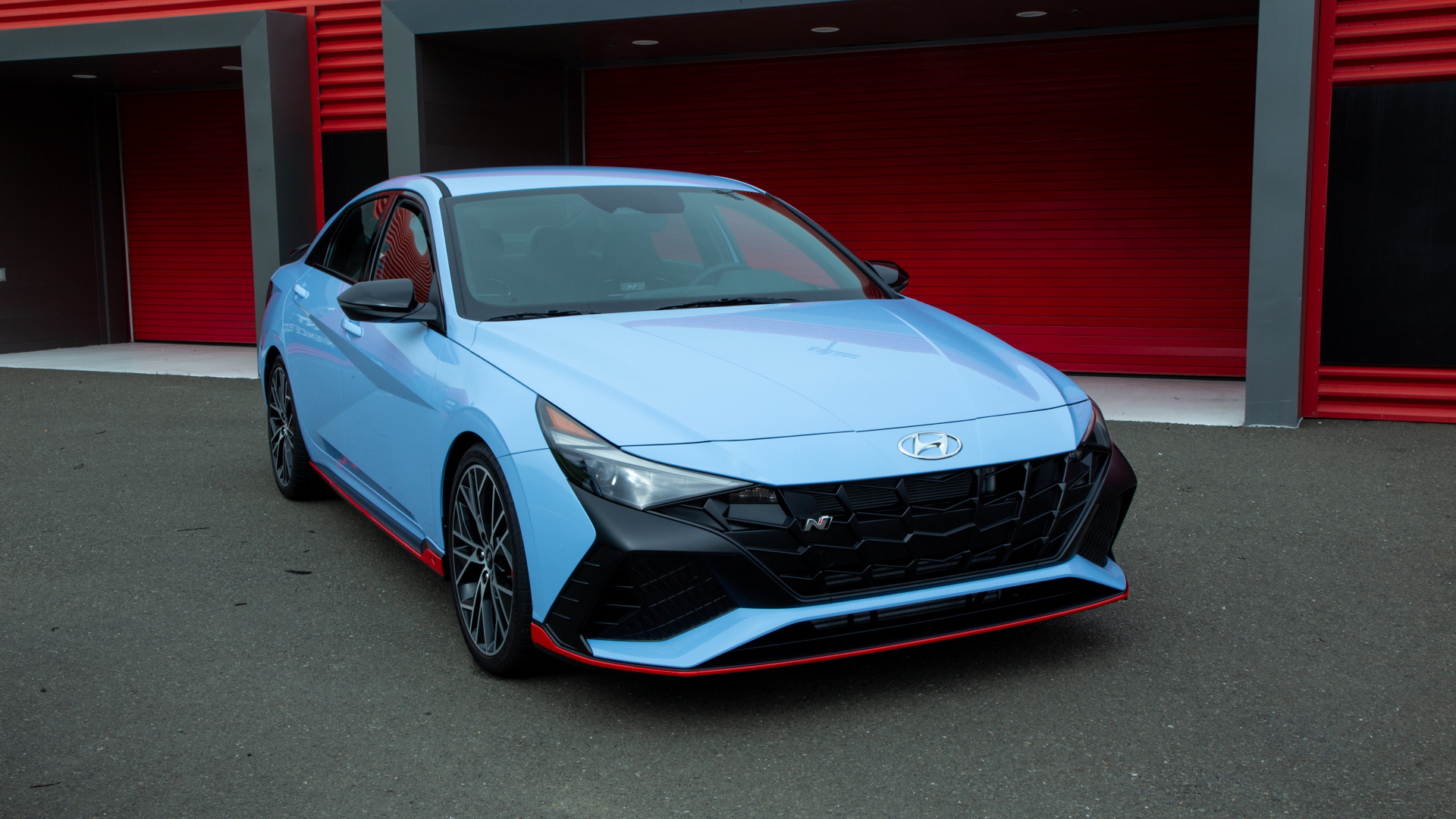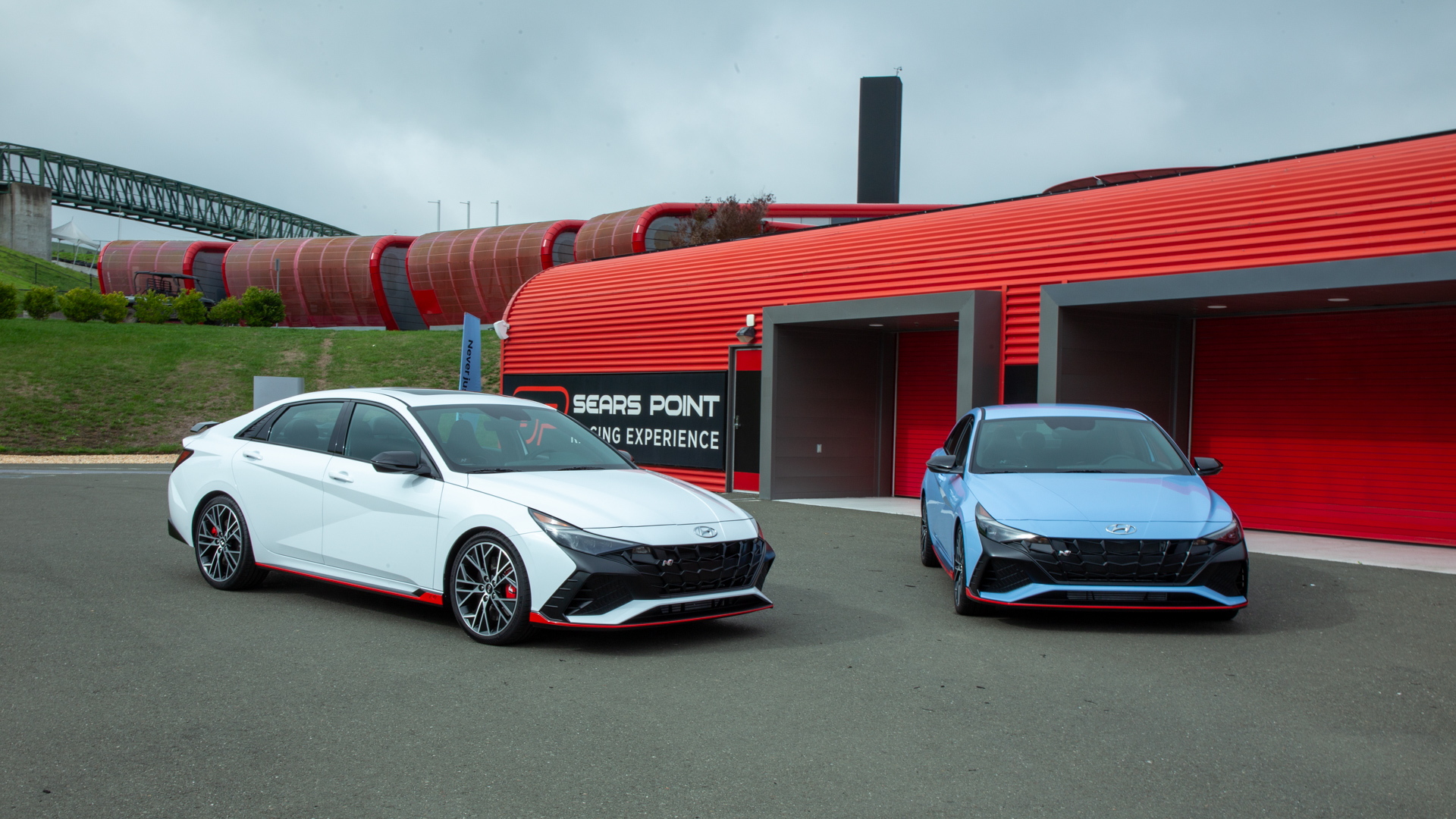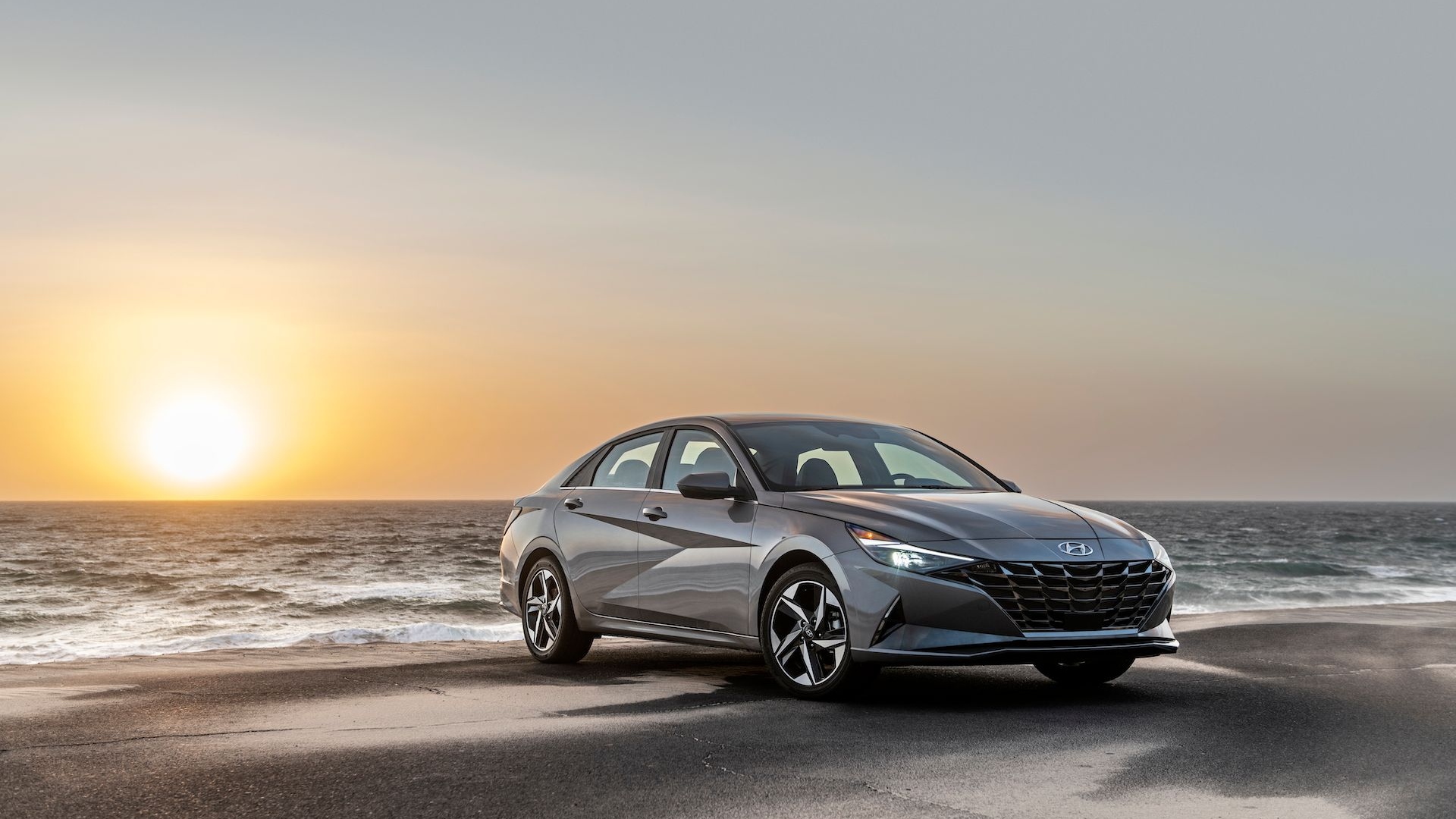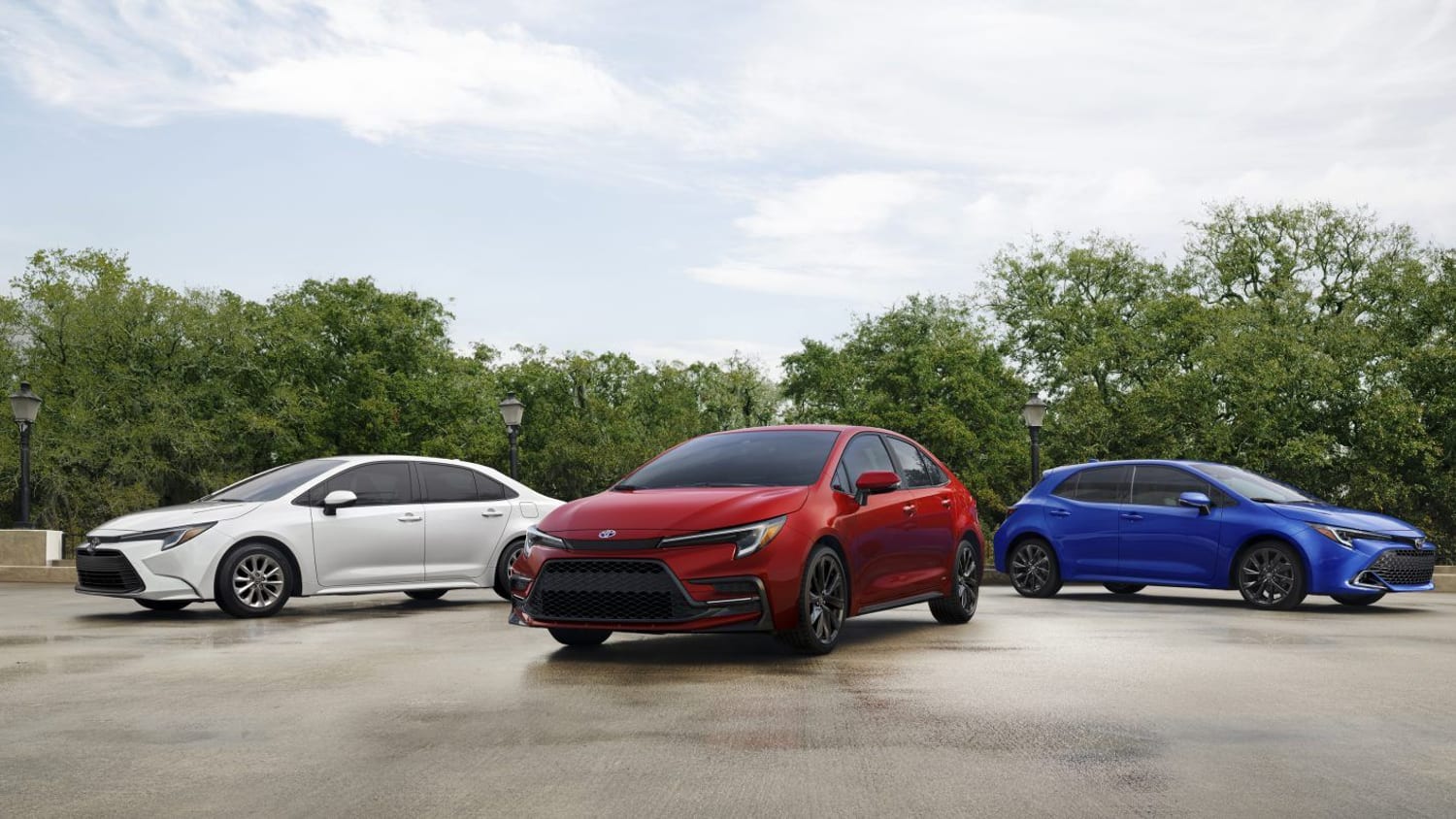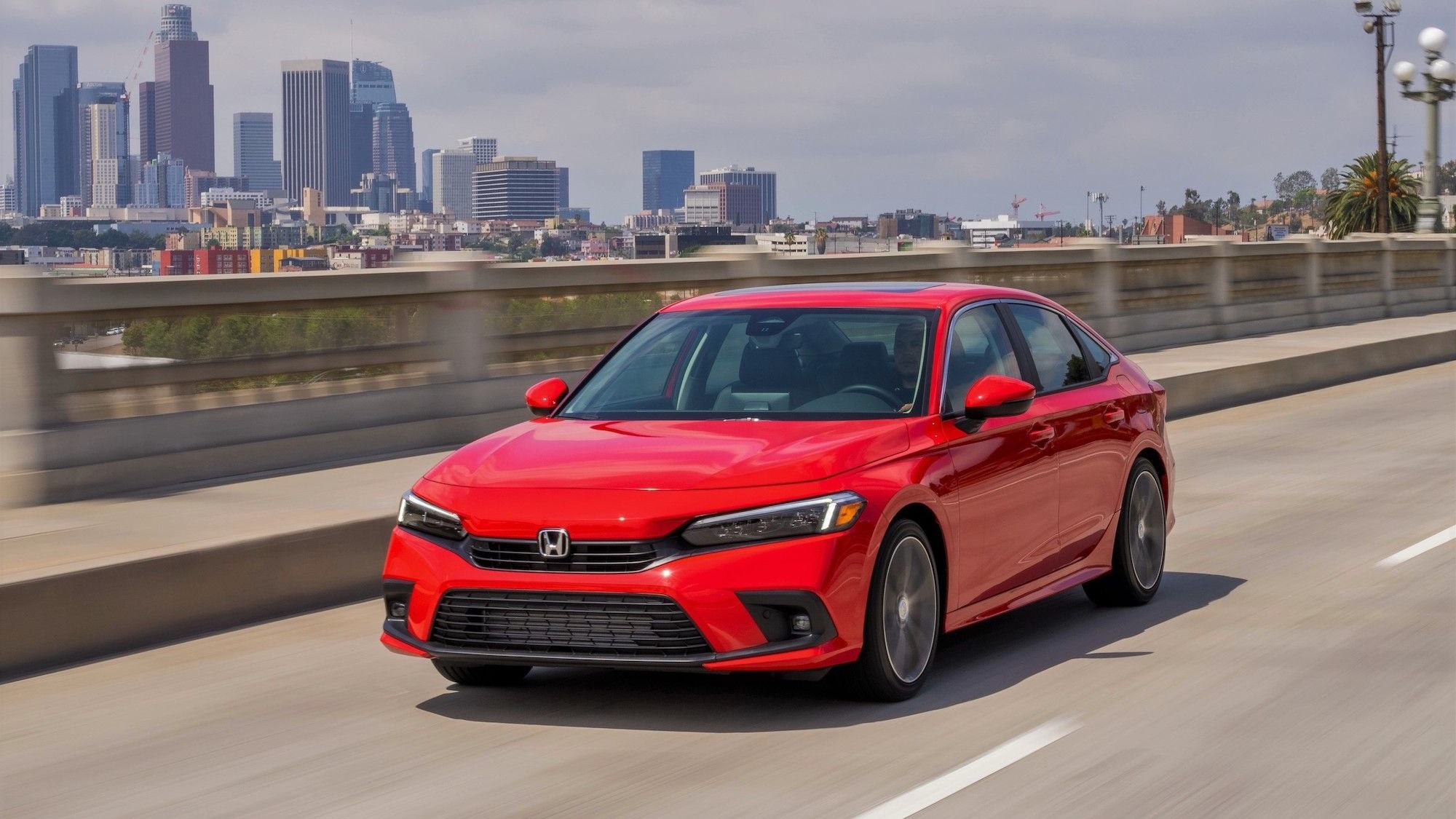Few places are more demanding on a sports car than Sonoma Raceway just north of San Francisco, with its blind crests, limited runoff, and bumpy braking zones. But that’s where Hyundai chose to give the automotive media our first extended crack at both the 2022 Elantra N. That shows a lot of confidence in the new Elantra N, which arrives with the Kona N to join the Veloster N in a growing performance lineup.
That relation to the Veloster N is a positive one. If you measure the performance capability of the Veloster N in smiles-per-dollar, there isn’t anything that can compete with the small Hyundai at the moment. The Elantra N takes many of the same mechanical parts, tosses in a new platform and some upgrades, and the resulting performance stew is very tasty indeed.
A throughline between all of Hyundai’s N cars (and even the Sonata N-Line could be thrown in that mix) is a big focus on fun. Their development process seems to be “that sounds fun, let’s go for it,” and the result is a playfulness that’s accompanied by serious performance. Albert Biermann, President of R&D for both Hyundai and Kia, admitted that “we spend more time on the N cars than anything else, not the Hyundais, Kia, or even Genesis.” It shows.

2022 Hyundai Elantra N
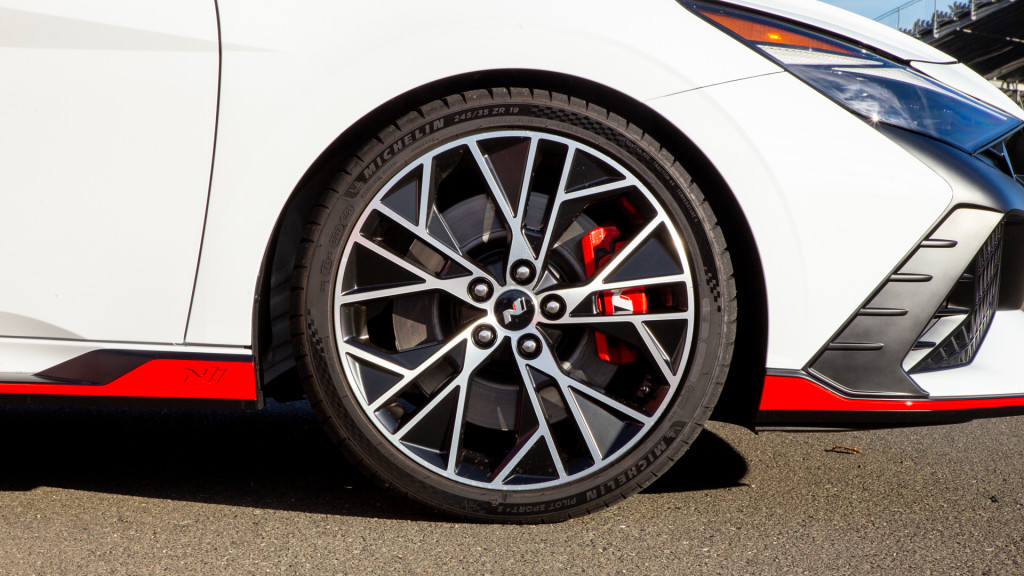
2022 Hyundai Elantra N
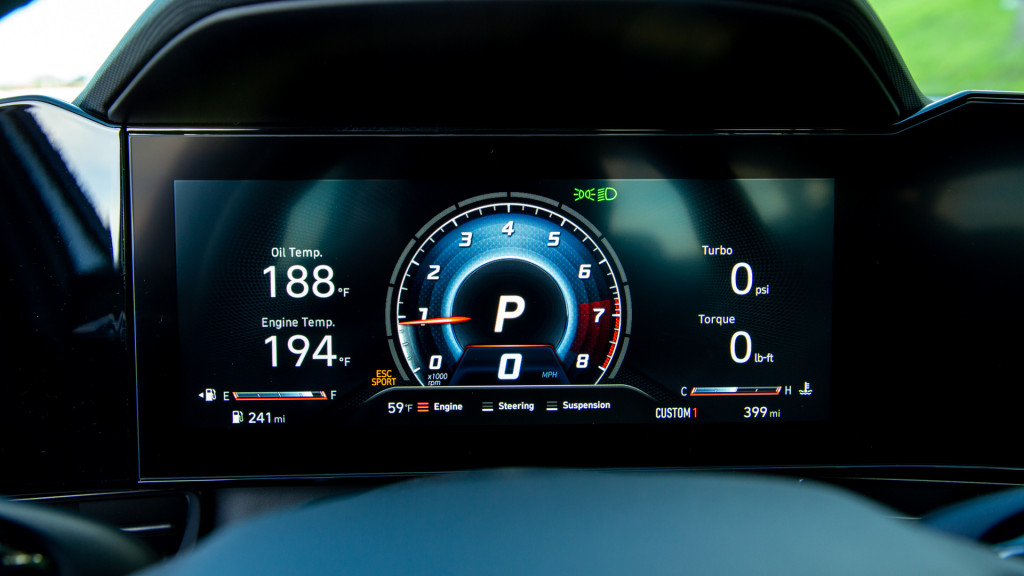
2022 Hyundai Elantra N
Grin and go
The Elantra N’s 2.0-liter turbo-4 sends its 276 hp and 289 lb-ft of torque to the front wheels through a choice of a 6-speed manual or 8-speed wet dual-clutch automatic transmission. Automatic models come with an “N grin shift” (NGS) button on the steering wheel that temporarily boosts the engine’s output to 286 hp and causes the transmission to shift at its quickest. This lasts for 20 seconds, after which the system needs 40 seconds of cooldown time before it can be used again.
The track at Sonoma puts a lot of stress on the powertrain. Two large hills after braking zones stall the car’s momentum, and if the powertrain isn’t up to snuff it can make climbing the hills arduous. The Elantra N doesn’t have gaudy horsepower numbers or an eye popping 0-60 mph time (5.0 seconds with the DCT), but ready torque from the turbo helped it charge up both hills with vigor. There’s a hint of turbo lag at lower rpm, but the transmission is very well sorted out and in its more aggressive settings will keep the engine churning in its power band (anything above 3,500 rpm). Crank it all the way up and it will hold gears all the way to redline, while also eliminating any awkward mid-corner shifts. The mapping was so good I only took control with paddles to see what they were like (great and very quick, in case you were wondering) because the DCT picked the right gear every time.
The 6-speed manual costs you time in the 0-60 mph run and on the track as well, but it’s a solid setup for manual fans. The throws felt a little long for track duty, but the gates were clearly defined and the clutch pedal very linear and consistent. Replacing the “NGS” button on the steering wheel in manual models is a “REV” button that turns rev-matching on and off. Leave it on for any kind of vigorous driving, and it works quite well. Drivers will be very happy with both transmissions; equipped with either unit, the Elantra N feels lithe and quick.
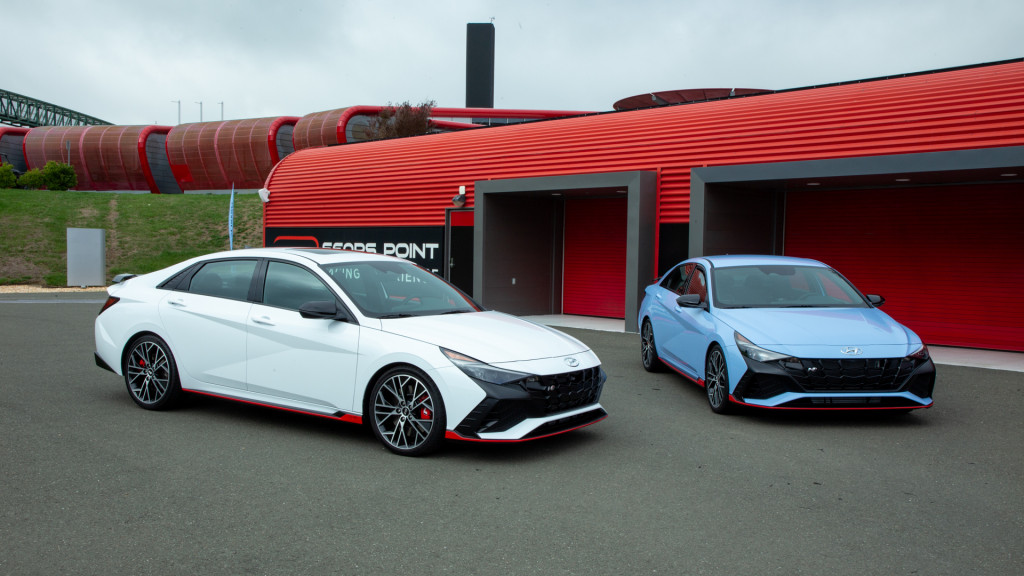
2022 Hyundai Elantra N
Corner savant
Underpinning the Elantra N is Hyundai’s latest K3 platform with an additional cross beam behind the rear seat for added body stiffness. It rides on an electronic controlled suspension, that doesn’t have adaptive dampers but three different damping force settings. On track and on the autocross, the most aggressive of these settings is the one to deploy.
Despite being larger than the Veloster N with an extra 2.8 inches of wheelbase (107.1 inches) and 16.2 inches of overall length (184.1 inches), the Elantra N is still very light. Curb weights are 3,186 lb with the manual and 3,296 lb with the DCT, which is only 80 lb more in the manual or 49 lb more with the manual than the Veloster N.
The stiff, light structure helps make the Elantra N an exceptionally balanced car despite its front-engine, front-wheel-drive layout. I detected a hint of body roll at the limits, but it felt controlled. Coming over the crests at Sonoma induced a touch of understeer as the car lightened and the suspension unloaded, but the Elantra N rebalanced itself quickly and held course as I unwound the steering wheel. The electronic limited-slip differential shifts extra power to the outside wheel during cornering. This helps prevent both understeer and torque steer, and at the apex of a turn it feels like the nose of the car gets yanked down into the corner as you reapply the throttle. It also helps that a sticky set of Michelin Pro Pilot Sport 4S summer tires come standard.
Steering feel is yet another highlight in the Elantra. Hyundai moved the steering motor from up near the wheel to down on the steering rack itself, which provides quicker responses and more feedback. The steering ratio has also been squeezed down from 12.9:1 to 12.2:1 in the Elantra, which cuts the turns from lock to lock from 2.5 to 2.2. There’s never a doubt as to what’s happening to the front wheels, which gives the driver more feel and control of the car. At its core, the Elantra N feels perfectly tuned to provide a good time.
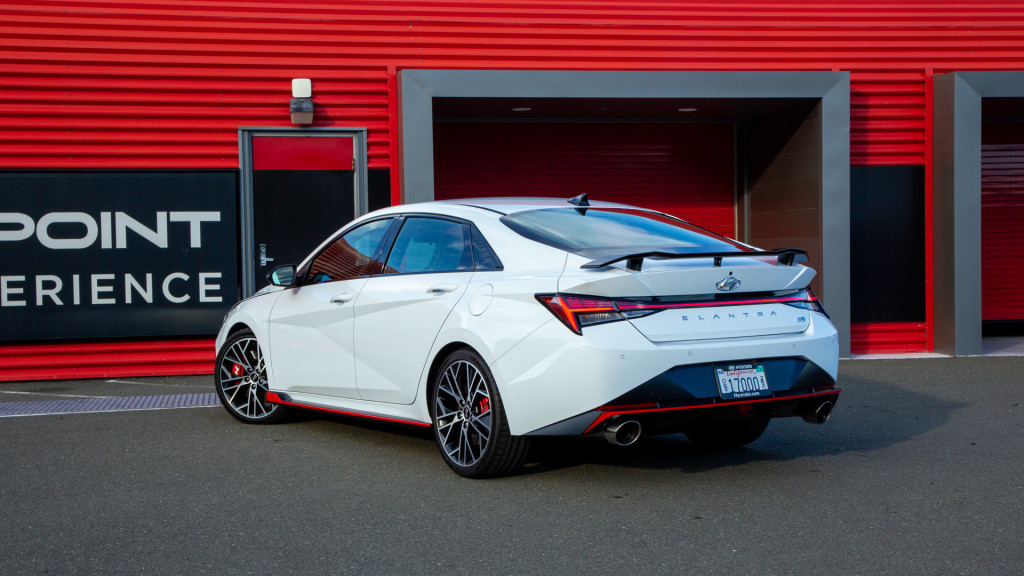
2022 Hyundai Elantra N
What about off the track?
On the street, the Elantra N calms down enough to be driven daily. Choosing the softer suspension setting and keeping the powertrain in a Normal mode softens the car’s harder edges. The cabin is also well-equipped with matching 10.3-inch screens in the cluster and center console, sport bucket seats, aluminum pedals, wireless phone charger, and heated front seats.
The 10.3-inch multimedia display is also home to the delightful N performance screens, which display important performance information in a clear and concise fashion. Hyundai also provides a simple graphical menu to set up the two custom drive modes, that lets drivers choose from a trio of modes for the engine, steering, suspension, transmission, stability control, and exhaust sound (the e-LSD only has two settings). Those custom modes can be activated by the large blue “N” buttons on the steering wheel.
When it’s not on the track, the Elantra N’s styling seems ostentatious. All of the angles don’t do the nose any favors, though the spoiler does help to make the back look more cohesive. But if I’m being honest, the thing drives so damn well that it could look like a PT Cruiser on the outside and I’d still love it.
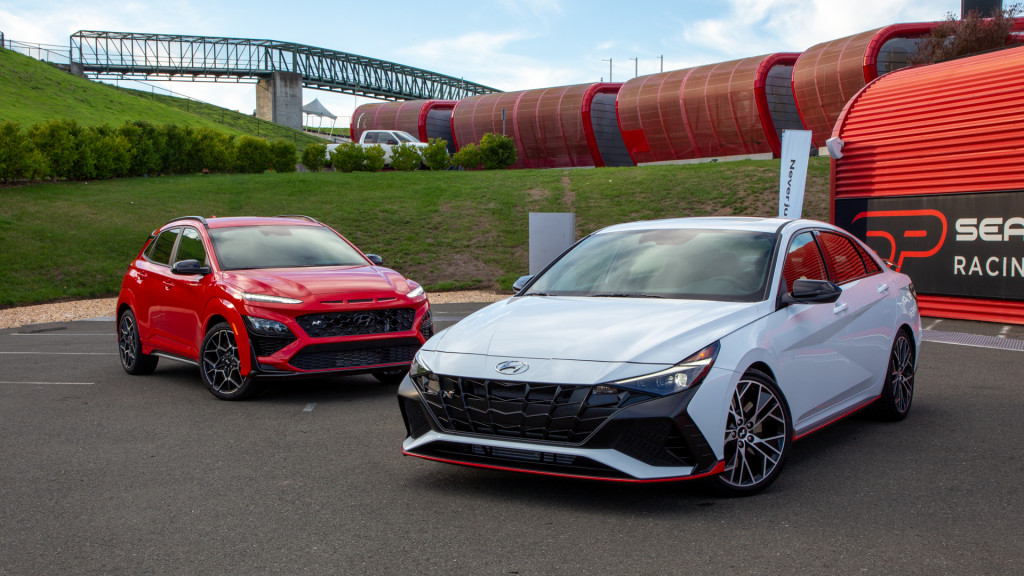
2022 Hyundai Elantra N and Kona N
The final piece
The fun all comes at bargain prices. It starts at $32,925 with the manual transmission and $34,425 with the dual-clutch automatic, both including a $1,025 destination charge. That makes it very competitive with cars like the Subaru WRX, Volkswagen GTI, and Honda Civic Type R. But the Elantra N is so good that it should aim higher. I had more fun behind the wheel of the Elantra N than pretty much anything else I’ve driven all year. The only compact car that really came close (and wasn’t an AMG or an M car) was the 2022 BMW M240i—but that car cost $56,000 and had no backseat.
Everything about the 2022 Elantra N works in harmony to make it a wonderful performance car. For an affordable, rocking good time, Hyundai’s N division currently stands alone.
Hyundai paid for travel, lodging, and track time for Motor Authority to bring you this firsthand report.
